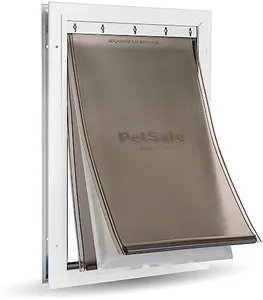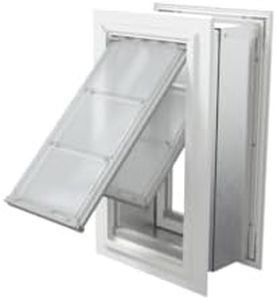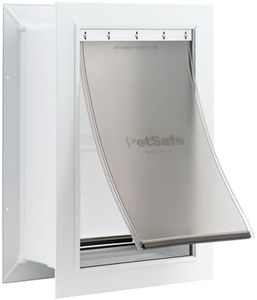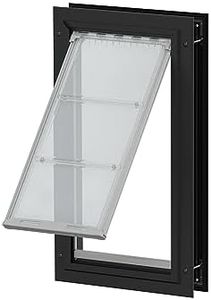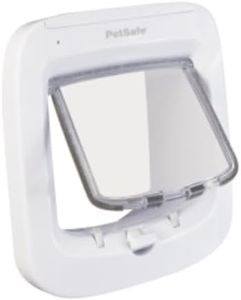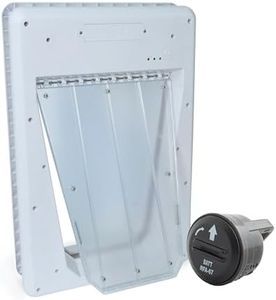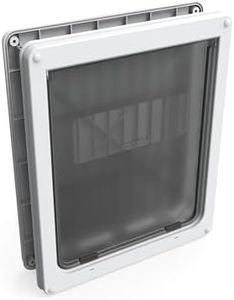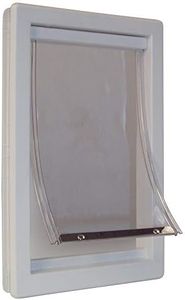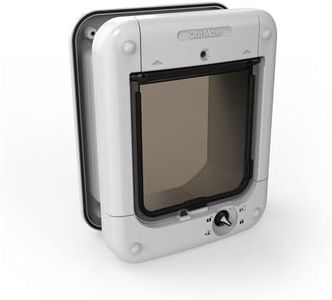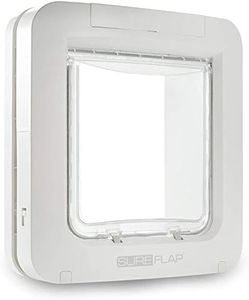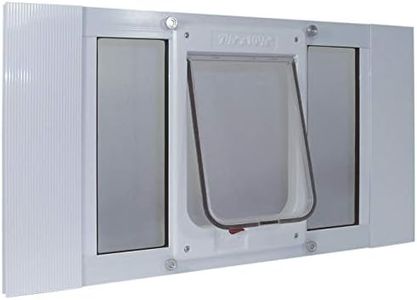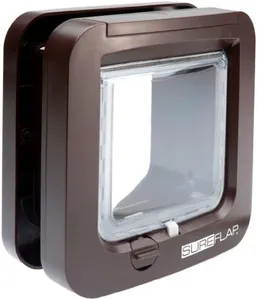We Use CookiesWe use cookies to enhance the security, performance,
functionality and for analytical and promotional activities. By continuing to browse this site you
are agreeing to our privacy policy
10 Best Automatic Pet Door
From leading brands and best sellers available on the web.Buying Guide for the Best Automatic Pet Door
Choosing an automatic pet door can make your life—and your pet's—much easier. Automatic pet doors can help your furry friends go in and out without needing your help every time, and they can also add security by controlling which pets or animals pass through. However, selecting the right one means thinking ahead about where you'll install it, which features best fit your needs, and how your pet interacts with technology.Door SizeDoor size refers to the dimensions of the opening that your pet can use to pass through. This is important because your pet should be able to comfortably walk through without squeezing or struggling. Sizes usually range from small for cats and little dogs to extra-large for bigger breeds. To choose the right size, measure your pet at their widest point and tallest point, and add a bit of extra space for comfort. If you have multiple pets of different sizes, pick a size that works for the biggest one that will use the door.
Activation MethodThe activation method is the way the door opens for your pet—this is a key feature for convenience and security. Common methods include microchip recognition, magnetic keys on your pet's collar, RFID tags, or motion sensors. Microchip and RFID options provide more selective entry, letting only registered pets pass, while motion sensors allow the door to open for anything moving nearby. If you want to prevent stray animals or unwanted wildlife from coming in, choose microchip or RFID-activated doors. For areas where security isn't a huge concern, magnetic or motion-sensor doors can be simpler options.
Weather Resistance and InsulationWeather resistance and insulation determine how well the door keeps out rain, wind, and cold or hot air. Good weather resistance is essential if you live in areas with strong weather, and proper insulation can help save on energy bills. Doors often come with weather-stripping, double flaps, or other features to keep drafts and water out. If your home is exposed to harsh weather, look for pet doors with thick insulation and tight seals. For milder climates, basic weather resistance may be sufficient.
Installation TypeInstallation type refers to where and how the pet door is installed. Options include doors designed for mounting in traditional household doors, walls, windows, or even sliding glass doors. Each installation type comes with its own considerations for cutting, fitting, and sealing. Choose based on the most convenient and accessible route for your pet and the construction of your home. Make sure to check that the door model you like is compatible with your intended installation location.
Power SourceAutomatic pet doors need a power source to function, either batteries or a connection to your home's electricity. Battery-operated doors offer more flexibility for installation, but require regular battery changes, while plugged-in doors may need access to a nearby outlet. Consider how easy it will be to access and replace batteries versus wiring in the power cord. If you want a quick and easy setup, battery operation may be best, but for low-maintenance long-term use, a plug-in door can be more reliable.
Locking and Security Features
